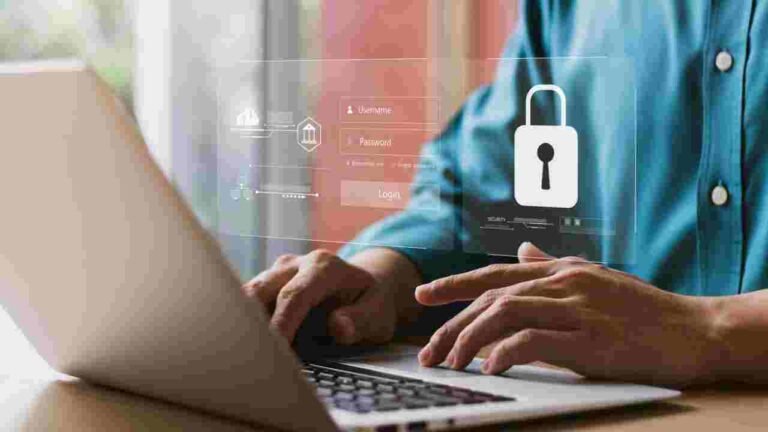1. Use Strong and Unique Passwords
One of the simplest yet most effective ways to protect your online accounts is by using strong, unique passwords for each account. Avoid using easily guessable passwords such as birthdays, names, or simple sequences. Instead, combine uppercase and lowercase letters, numbers, and special characters. Consider using a password manager to generate and store complex passwords securely.
Key Features:
- Unique passwords for each account
- Complex combinations of letters, numbers, and symbols
- Secure password storage through password managers
2. Enable Two-Factor Authentication (2FA)
Two-factor authentication adds an extra layer of security to your accounts by requiring a second form of verification. This could be a text message code, email verification, or an authentication app like Google Authenticator or Authy. Even if a hacker obtains your password, 2FA makes it significantly harder for them to access your account.
Key Features:
- Adds an extra verification step
- Reduces the risk of unauthorized access
- Supports authentication apps and SMS codes
3. Keep Software and Devices Updated
Cybercriminals often exploit vulnerabilities in outdated software and operating systems. Regularly updating your devices, apps, and browsers ensures that you have the latest security patches installed. Enable automatic updates whenever possible to minimize risks from unpatched security holes.
Key Features:
- Protection against known vulnerabilities
- Latest security patches installed
- Automatic updates for apps and operating systems
4. Be Cautious with Phishing Emails and Messages
Phishing attacks are a common method cybercriminals use to steal personal information. Avoid clicking on suspicious links or downloading attachments from unknown senders. Always verify the sender’s email address and look for signs of phishing, such as poor grammar, urgent requests, or suspicious URLs.
Key Features:
- Recognize phishing attempts
- Avoid clicking suspicious links or attachments
- Verify sender identity before responding
5. Secure Your Wi-Fi Network
A secured Wi-Fi network is essential to protect your personal information from hackers. Use strong passwords for your network and enable WPA3 or WPA2 encryption. Avoid using public Wi-Fi networks for sensitive transactions, such as banking or shopping, unless using a VPN (Virtual Private Network).
Key Features:
- Strong passwords and encryption for Wi-Fi
- Avoid unsecured public Wi-Fi for sensitive tasks
- Use VPN for secure internet connections
6. Limit Personal Information Sharing Online
The less personal information you share online, the harder it is for cybercriminals to exploit your data. Avoid oversharing on social media platforms, and review privacy settings to control who can see your information. Be cautious when providing personal details on websites and always check for secure connections (https://).
Key Features:
- Limit data shared on social media
- Adjust privacy settings for account safety
- Ensure secure websites before sharing personal info
7. Monitor Your Accounts Regularly
Regularly monitoring your accounts helps detect unusual activity early. Check your bank statements, credit card transactions, and online account activity for suspicious behavior. Many online services provide alerts for unusual login attempts, so enable notifications to stay informed in real time.
Key Features:
- Frequent review of account activity
- Alerts for suspicious logins
- Early detection of unauthorized access
8. Use Antivirus and Anti-Malware Software
Installing reputable antivirus and anti-malware software adds an additional layer of protection to your devices. These programs can detect, quarantine, and remove malicious software before it compromises your personal information. Keep these programs updated to defend against the latest threats.
Key Features:
- Protection against viruses and malware
- Real-time threat detection
- Regular updates for new security threats
9. Backup Your Data Regularly
Regularly backing up important data ensures you can recover your information in case of a cyberattack, device failure, or ransomware attack. Use cloud storage or external drives to keep multiple copies of critical files securely. This practice safeguards your personal information and reduces the risk of data loss.
Key Features:
- Backup important files regularly
- Use cloud storage and external drives
- Protect against data loss and ransomware attacks
10. Educate Yourself on Cybersecurity
Staying informed about current cyber threats and best practices is vital. Follow reliable cybersecurity blogs, news sources, and online courses to understand emerging risks and protection strategies. The more knowledgeable you are, the better equipped you are to safeguard your personal information.
Key Features:
- Stay updated on latest cyber threats
- Learn cybersecurity best practices
- Implement informed protection strategies
Conclusion
Protecting your online accounts and personal information requires a combination of strong passwords, two-factor authentication, cautious online behavior, and the use of security tools. By taking proactive measures and staying informed about cybersecurity risks, you can significantly reduce the likelihood of falling victim to cybercriminals and safeguard your digital identity.

